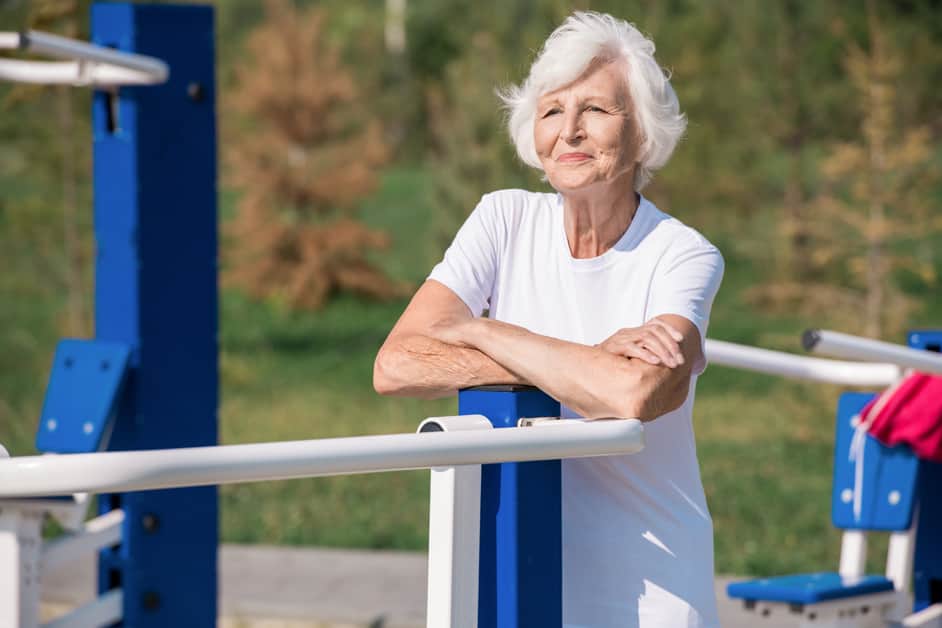Overview of Knee Pain
Knee pain is a common issue many people experience. Injury, overuse, and other conditions can be the cause. Thus, it’s important to know how to rest and recover properly.
In this article, we’ll provide an overview of knee pain and discuss the best rest and recovery techniques to decrease and manage it:
Common Causes of Knee Pain
Knee pain is very frequent. Reasons behind it may vary. Here are some of the most common:
- Arthritis: This can cause pain, stiffness, swelling and lack of mobility. Osteoarthritis is the most general type. It occurs when cartilage breaks down over time.
- Injury: A fall or accident can lead to intense knee pain. Examples of this are torn ligaments (ACL and MCL) and dislocated kneecap (patella).
- Inflammation: Inflammation of the tendons or bursae close to the knee joint can give rise to pain and swelling. Tendinitis is related to overuse injuries like running or high-impact sports. Bursitis is usually caused by activities like kneeling or climbing stairs.
- Alignment Problems: Poor alignment of the feet and legs can put extra stress on the knee joint, causing damage to the cartilage that cushions it. Pronation, where your feet turn inwards when walking, can also cause knee pain due to too much strain on the ligaments near the kneecap.
Understanding the Anatomy of the Knee
To understand knee pain prevention and relief, we must first understand the knee’s anatomy. It consists of three bones: femur, tibia, and patella. Plus two ligaments – medial and lateral collateral – that offer stability. The knee also has four muscles crossing over it – the quadriceps: rectus femoris, vastus lateralis, vastus intermedius, and vastus medialis. These muscles help extend the leg and keep the kneecap in its proper place. Plus, a hamstring muscle helps to bend the knee by tugging on a tendon at the back.
Nerves in the lower legs send signals from the brain to control the muscles’ actions. Also, many other structures, like meniscus tissue, tendons, and fat pads, provide strength and flexibility. With this knowledge, we can now investigate rest and recovery techniques to reduce or eliminate knee pain.
Rest and Recovery Techniques
Want to reduce knee pain? Here are the top rest and recovery techniques! Heat therapy, massage and more – we’ll discuss it all. Inflammation can be reduced with these methods. Plus they help healing and relaxation. Let’s look into the best methods for preventing and relieving knee pain.
Cold Therapy
Cold therapy is a rest and recovery technique used for treating knee pain. By putting cold on the affected area, swelling and inflammation can be reduced. Pain levels can also be lowered, helping you heal faster and avoid more damage.
When using cold therapy, it’s important to apply it for 10-15 minutes at a safe temperature. This should not exceed 40°F/4°C. Ice packs, ice baths or cool compressions are all good options for applying cold therapy to your knee. Wrap the ice pack in a towel or other material so that it doesn’t come into direct contact with the skin. Ice can cause tissue damage or reduce circulation if used incorrectly.
If you feel pain while using cold therapy, increase the length of time or lower the temperature. If discomfort continues with swelling or other symptoms like fever or chills, see your doctor. These may be signs of further injury or infection that need medical attention.
Heat Therapy
Drugstore pain relief is usually the go-to for knee pain. Yet, heat therapy can be even better! Heat therapy is great for prevention and treatment, but you must use it correctly. It’s best to consult a health provider or physical therapist first. This way, you’ll know the duration and temperature your condition requires.
Heat therapy dilates blood vessels, increasing circulation around the affected area. This can help improve flexibility, reduce stiffness, and relieve pain. Heat therapy comes in many forms, like microwavable hot packs, heated wraps, and Epsom salt baths. But, it’s best to ask your health provider before using any devices. Plus, it should never feel too hot—just pleasantly warm. Burning sensation can cause more damage than relief.
Massage Therapy
Massage therapy can provide relief of pain in the knee, particularly with osteoarthritis. It includes kneading and stroking with firm but gentle pressure to ease tight muscles. Massage helps break down scar tissue, decreases pain and improves mobility. It also reduces muscle fatigue after physical activity and speeds up recovery from any tissue damage.
It is important to note that massage should not replace more effective treatments, like physical therapy or medication. Rather, it should be used in addition to them. Different massage techniques exist, such as Swedish massage or deep tissue (Myofascial Release). If you suffer from chronic knee pain and think massage therapy could help, seek out a licensed professional who specializes in this form of treatment.
Stretching and Strengthening Exercises
Stretching and strengthening exercises can help with knee pain. Stretching elongates the muscles and tendons that support the joint. This lessens the stress on it during physical activity. Strengthening builds stability in the muscles around the knee to prevent pain or injury.
For stretching, calf, hamstring and quadriceps stretches are good. Hold for 30 seconds, repeat 3-5 times. Dynamic stretching drills like leg swings are beneficial for stiffness due to osteoarthritis or meniscal tears.
Strengthening exercises also help with pain and injury prevention.
- Wall sitting
- Bridges
- Single leg balance raises
- Partial squats/squat holds
- Quad exercises such as straight leg raises and inner/outer thigh clamshells
restore strength around the knee after injury or surgery.
Prevention Strategies
Knees need care! Establishing a routine of rest and recovery is the way to go. Tailor it to your individual needs. Taking precautions before and after exercise can help reduce knee injuries and keep them healthy. Here are some tips to prevent and manage knee pain with rest and recovery:
- Stretch regularly to keep your muscles flexible.
- Allow adequate rest between workouts.
- Make sure to warm up before exercise.
- Apply ice to reduce swelling.
- Take anti-inflammatory medications as prescribed by your doctor.
- Wear appropriate footwear to support your knees.
Maintaining a Healthy Weight
Achieving a healthy weight is a key way to stop knee pain. Even a small amount of extra weight, particularly in people who do high-impact activities like running, can add stress to joints and cause inflammation. People should try to reach a healthy Body Mass Index (BMI) and stay physically active. Eating healthy foods like grains, proteins, fruits, and veggies will give the body the nutrients it needs.
Strength training that focuses on the muscles near the knee, like squats and leg presses, can help the knee stay strong and stable. It may even reduce pain. Additionally, give your muscles a break between workouts or activities. This will help them stay strong and less likely to get hurt.
Wearing Appropriate Footwear
Choosing the right footwear is key for healthy feet. Make sure it fits properly, gives cushion and support and protects from harm. When shopping, pick shoes that are comfortable and supportive, with enough cushioning and arch support. Shoes too tight can cause blisters or athlete’s foot. Too loose, you risk tripping and slipping injuries.
Certain tasks and activities require specific types of shoes. Like in the workplace, slip-resistant soles or steel-toed boots to avoid falls or injury from dropped objects. Hiking or rock climbing? Moisture-wicking socks and closed-toe sneakers with a good grip on the sole are safer than open-toed sandals.
Lastly, replace worn shoes to reduce the risk of calluses, corns and plantar fasciitis due to lack of cushioning and support.
Avoiding High-Impact Activities
High-impact activities can cause knee pain or injury. So, if you are prone to knee pain, it is important to avoid activities like netball, soccer, and basketball.
Switch to low-impact activities, such as swimming and cycling. Gentle stretching exercises, like yoga, can help strengthen the joints around your knees and reduce pain.
Focus on exercises that target the muscles surrounding the knee joint. This will protect the knee joint and help prevent injuries.
When to Seek Medical Attention
When treating knee pain, an individualized approach is key. Rest and recovery are important, but it’s also important to know when to seek medical attention. This section will look at why and when to seek help from a doctor or physical therapist.
Signs of a Serious Injury
Time is key when it comes to detecting signs of a major injury. After a traumatic event, like a car crash, sports injury, or fall, there may be symptoms that point to tissue damage. Getting medical help immediately will help you avoid long-term consequences.
Signs that you should watch for include:
- Pain that gets worse with movement or worsens over time;
- Bruising, swelling, and/or redness near the injury site;
- Numbness, weakness, or tingling at or near the injury;
- Trouble moving the injured body part;
- Weakness on one side of your body;
- Dizziness, nausea, and confusion;
- Headaches followed by blurry vision;
- High fever with chills and sweats.
If you notice any of these symptoms after an accident or trauma, it’s important to see a trained healthcare professional as soon as possible. Even if you had medical care at the scene and were feeling okay, some injuries may not develop until hours later. You must watch for any changes in your condition that could signal something more serious.
Types of Medical Treatments
If your knee pain persists, you may need to get medical help. Physical therapy is usually the first step. A physical therapist will work with you to make an individualized plan to strengthen and stretch the muscles that help the knee joint. Exercises will help with strength and flexibilty in the lower body and help protect the knee from more harm. Your therapist can also suggest techniques such as ultrasound or massage to reduce swelling and muscle tension.
In more serious cases, surgery might be needed. This could be a simple procedure to provide stability around the joint, or a complex reconstruction of ligaments. Your doctor may also give you medicines, like anti-inflammatories or injections, to ease pain and swelling so you can do exercises comfortably.
If you can’t do everyday activities, or if the pain doesn’t get better with rest and recovery, it’s important to get medical attention. Early intervention will help you prevent long-term damage and get your knee function back to normal quickly!
Conclusion
To sum up, rest and recovery methods are invaluable for stopping and reducing knee pain. If you have an injury or overuse ache, taking time to care for yourself can help you get back to what you enjoy doing with ease.
Tips for success include:
- Stretching regularly
- Being aware of your position when seated, standing or lying
- Finding an exercise routine that works for you
- Avoiding activities that hurt or feel unpleasant
Additionally, talk to health experts like PTs and doctors before making changes to your lifestyle to make sure you get the best care for your situation.
Frequently Asked Questions
Q1: What are the best rest and recovery techniques for knee pain prevention?
A1: The best rest and recovery techniques for knee pain prevention include low-impact exercises such as swimming, water aerobics, and biking; stretching; foam rolling; cold therapy; and massage.
Q2: What are the best rest and recovery techniques for knee pain relief?
A2: The best rest and recovery techniques for knee pain relief include low-impact exercises such as swimming, water aerobics, and biking; stretching; foam rolling; compression wraps; and hot and cold therapy.
Q3: Are there any other techniques that can help with knee pain prevention and relief?
A3: Yes, other techniques that can help with knee pain prevention and relief include physical therapy, acupuncture, and chiropractic care.





